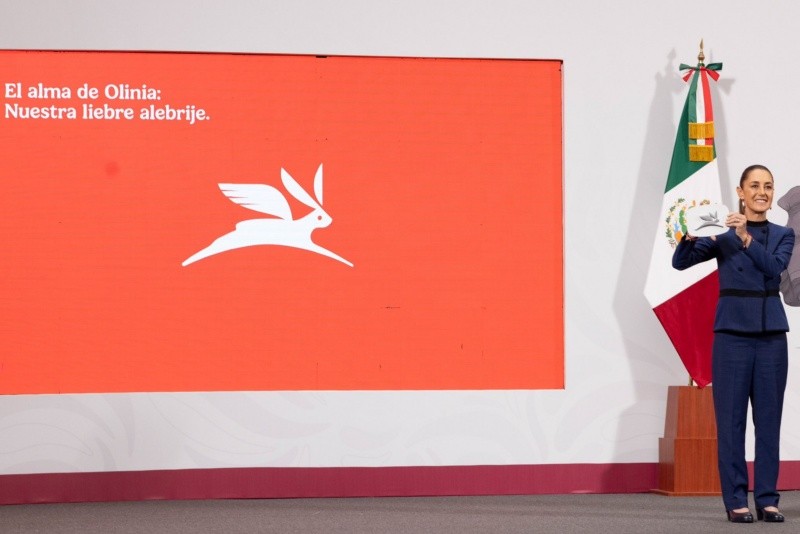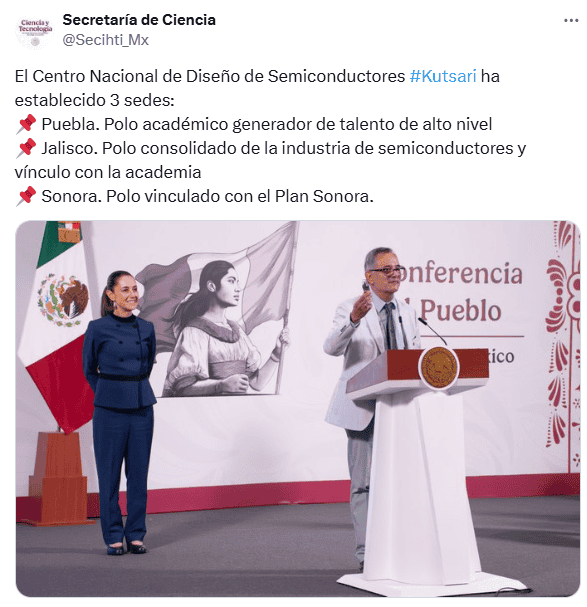Development of the Mexican electric car Olinia advances

Rosaura Ruiz, head of the Secretariat of Science, Humanities, Technology and Innovation (SECIHT), highlighted this Wednesday, August 13, in "La Mañanera del pueblo" the progress made in the development of the Olinia electric car , whose model will be unveiled in September.
During PresidentClaudia Sheinbaum Pardo 's morning press conference at the National Palace, progress was also presented on the Kutsari project on semiconductor design.
The head of SECIHT emphasized that Olinia will be a safer, more environmentally friendly, and more affordable car . "This marks the beginning of a new era for the country, where science and humanities become social justice, and technology becomes sovereignty," she declared.
These will be the Olinia modelsRoberto Capuano, coordinator of the Olinia project, noted that two working tools are being developed. The first model will be a passenger transport vehicle that represents "a true alternative to the motorcycle taxi: More comfortable, more modern, and more profitable thanks to a drastic reduction in operating costs."
Another model is planned for commercial delivery use , designed for street use and meeting the need for freight transportation in urban environments. "We want to create a tool to accelerate the growth of small businesses," he said, adding that a design center has already been established in Puebla.
"Olinia will be a car proudly made in Mexico," Capuano told President Claudia Sheinbaum.
"This vehicle will not cost more than 150 thousand pesos," said the Olinia project manager.
Alebrijes, inspiration of Olinia
In the Treasury Room, the person in charge of the electric car said that they will be unveiled next September. The electric models are lightweight, powerful and rechargeable in any conventional socket. Its operating cost will be lower than that of any gasoline-powered car "and even that of a motorcycle."
The logo was also presented, inspired by the magic and color of the alebrijes: A hare with wings.
He explained that it symbolizes practical intelligence, adaptability, and efficient energy use. "We identify with its dynamism, which, like Mexico, is unstoppable, and its wings represent the freedom to move, to overcome obstacles, and our ability to dream."
"They're a nod to our eagle, yes, but in a unique and distinctive form, symbolizing a new kind of flight, the flight of innovation," he said.
"This alebrije will be the seal that guarantees that it is an authentic product, a symbol of quality and of Mexico's transformation," Capuano added.
Will Olinia be produced with public or private resources?President Claudia Sheinbaum Pardo said on "La Mañanera" that they are analyzing whether the Olinia car will be produced with public funds or in partnership with a private company.
"We are analyzing whether production will be solely public or whether there will be a partnership with a private company that will allow us to access resources and the involvement of a private company willing to help us develop the vehicle," he emphasized.
The federal leader added that they are now designing and analyzing what mass production would look like, and that anyone could purchase it.
"It's a national project, nationally designed, it will be generated all its parts at the national level and will cover that sector, but anyone will be able to acquire it," he added.
Kutsari Project: Innovation in Semiconductors
Edmundo Antonio Gutiérrez Domínguez, in charge of the Kutsari project on semiconductor design, recognized the governments of Puebla, Jalisco, and Sonora for their logistical, economic, and infrastructure support.
Gutiérrez Domínguez stated that "we are ready for the inauguration in Puebla." In Jalisco, they are working with Cinvestav, and a unit is being installed at the University of Sonora. He highlighted the creation of a creatinine production system that can be used in the healthcare sector through knowledge linkages and human talent development.
He noted that there must be a connection, which is why collaboration has been explored with the Korean Semiconductor Association and Siemens, among other European companies , to broaden the client base and thus build a foundation.
By 2025, the company is expected to sign at least one agreement for the Design Center's first commercial chip; by 2027, it is expected to be self-sustaining; and by 2030, local market coverage and global sales will be achieved.
*Stay up to date with the news, join our WhatsApp channel
Also read: Sheinbaum talks about sending 26 drug traffickers to the United StatesOF
informador





